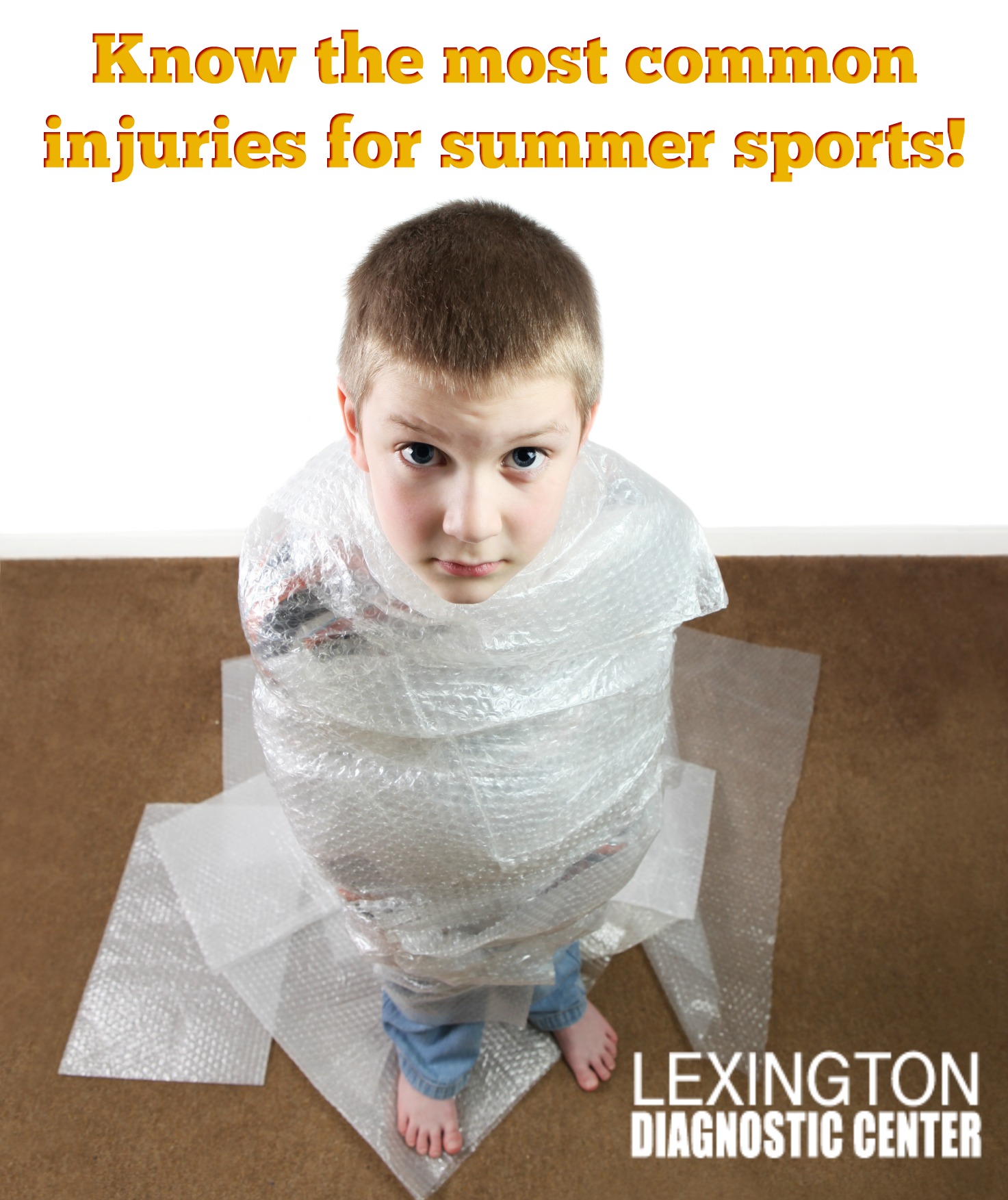Warmer weather, bluer skies and sunny days have a way of spurring even the most dedicated couch potato off the cushion and into the great outdoors. Sadly, human beings don’t often behave in rational ways, we don’t like to prepare, and we often imagine ourselves to be in far better physical condition than we are.
The almost inevitable result of this behavior? Injury.
That’s not to say we shouldn’t avail ourselves of every opportunity to be more active (we should) or we shouldn’t enjoy the great outdoors (we must) or that we need to be wrapped in bubble wrap (well? maybe). But it does mean we need to be a little more careful with our bodies and to pay close attention when they’re trying to tell us something. Like “I HURT!”
The specialists at Lexington Diagnostic Center have seen it all, literally. Blown ACLs. Broken legs. Mangled elbows. Stretched ligaments. Torn cartilage. You name it, they’ve helped diagnose it. If your pursuits land you in a world of hurt this summer, the folks at Lexington Diagnostic Center can help!
In the meantime, they offer the following digest of common summer sports injuries and how they’re diagnosed to help your body survive whatever you put it through this year.
One of the most commonly occurring summer injuries is the sprained ankle. They happen everywhere: stepping down from a curb, playing badminton at the family reunion, picnicking in the park. Wherever there’s an uneven surface, there’s an opportunity for an ankle sprain! If you can put weight on the ankle for about three steps, and nothing is sticking out or looking really nasty, treatment with rest, ice, compression and elevation (RICE) should be sufficient. But if the ankle swells, becomes extremely painful or it’s difficult to walk, it’s best to see a doctor. Diagnosis will undoubtedly involve an x-ray to determine if anything’s broken.
Injuries to the shoulder can be quite painful and serious. Shoulder strain occurs when a muscle or tendon in the shoulder is stretched. Signs include pain, swelling, muscle cramps or spasms and limited range of motion. Often, these injuries occur when the weekend athlete pitches one too many fast balls, plays too much golf or tennis, or really gets at the rowing machine. A rotator cuff injury is more serious and often seen in athletes and others who use their arms overhead a lot. Think construction workers, swimmers, baseball players and weight lifters. Diagnosing shoulder injuries may include x-rays or an MRI.
Overuse injuries/stress fractures occur as people transition from an indoor running environment to pounding the pavement outside. Although increased mileage and harder surfaces are often the culprit, we also see patients with stress fractures arising out of a 5K fun run. Stress fractures aren’t fun but helping others does help lessen the pain a little (as would a little bit of training beforehand). Stress fractures can be difficult to diagnose and don’t always show up on a general x-ray. Often, an MRI is required to make the diagnosis. With a stress fracture, you’ll be on crutches (or in a boot) for a while and may be given anti-inflammatories for the swelling and pain.
Collar bone (clavicle) injuries are common among children and young adults who spend time rollerblading or at the skate park. We also see these sometimes with watersports like tubing, whitewater rafting, wakeboarding or skiing. There’s often a lot of pain and moving the arm can be very difficult. Because the collar bone lies so close to the surface of the skin, a break is usually pretty obvious, but an x-ray will confirm the diagnosis.
Knee pain is common year-round, but athletes (and would-be athletes) sometimes experience it as a result of a bike accident or from pushing themselves too far and too hard cycling. Just as in running, bicyclists should build up to longer distances over a period of weeks. If your doctor suspects a tear or injury to the meniscus (the cartilage that cushions the joint), an MRI will be ordered. If a dislocation is suspected, the first step will likely be an x-ray, possibly followed. Treatment will depend upon the severity of the injury.

